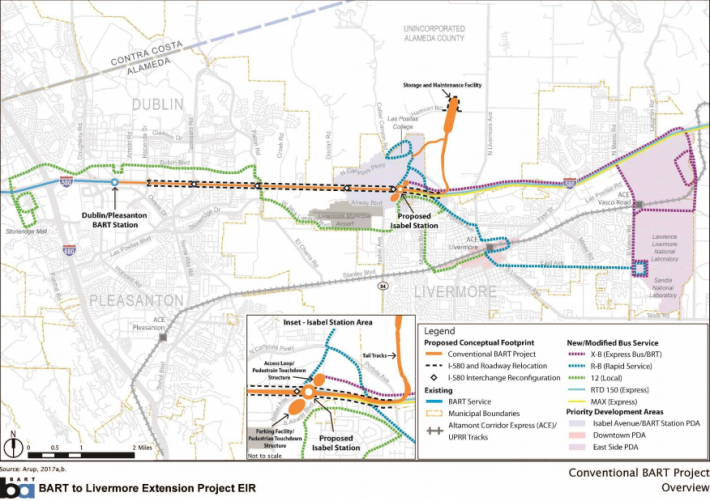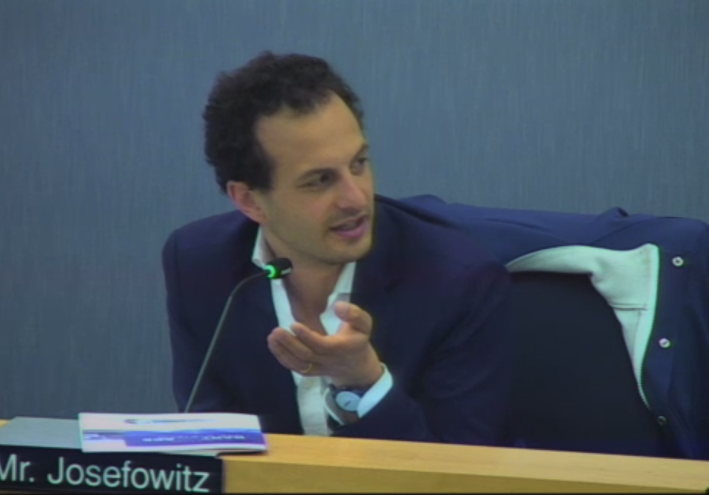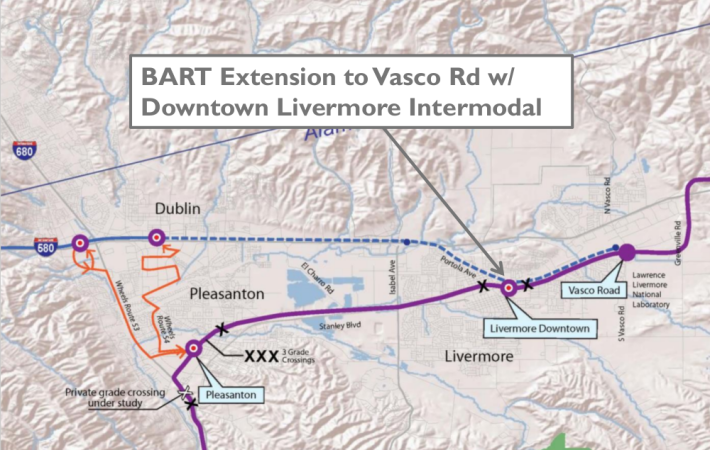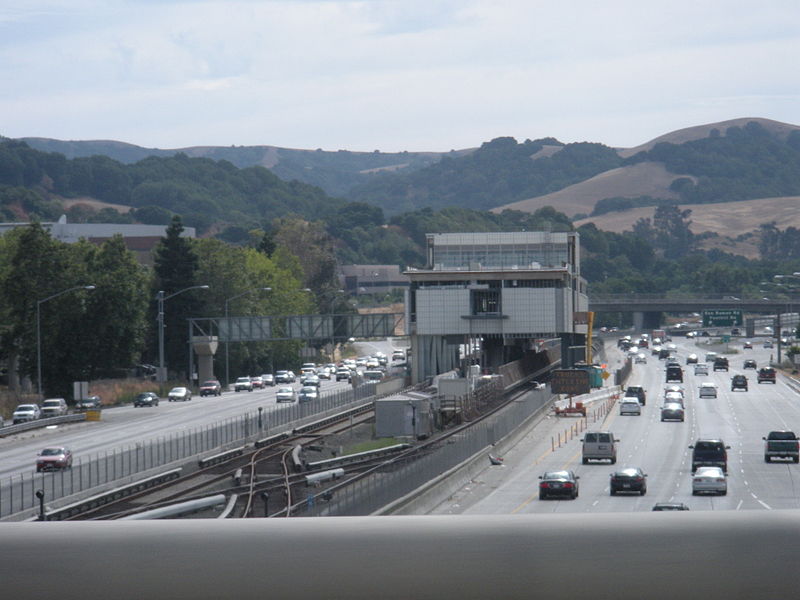The BART Board of directors spent two and a half hours this morning debating and hearing from staff and constituents about a proposed $1.6 billion extension of the Dublin/Pleasanton branch to Livermore. The extension would travel roughly five miles east, in the middle of I-580, to a new station in the center of the freeway and ramp complex at Isabel Avenue. A final vote on the extension could come as soon as May 24.

The agency is also looking at cheaper alternatives to conventional BART for the extension, including standard-gauge diesel multiple unit (DMU) trains such as on the East Contra Costa "eBART" extension of the Pittsburg/Bay Point line. Another option is to build a conventional electric multiple unit (EMU) train, such as those used in Denver, Chicago, on the east coast of the U.S., or anywhere in Europe or Asia. In those cases, passengers would have to transfer at the Dublin/Pleasanton station. BART is also considering a system of express buses (basically, Bus Rapid Transit oriented around connecting Livermore and the surrounding communities and job centers to Dublin/Pleasanton BART). That would cost $367 million.

As to the "cheaper" rail alternatives, according to BART's study, DMU would cost $1.599 billion. EMU seems like a complete non-starter, as it would cost $1.665 billion--more than conventional BART, which is estimated to cost $1.635 billion (it should also be noted that technically a BART train is an EMU, in that each car is electric and has its own motors, although in American rail jargon EMU usually refers to mainline trains that can operate on the same tracks as Amtrak and freight trains).
Opponents to the plan took issue with spending so much money on a freeway rail extension in a low-density, sprawling suburb while the core of the system continues to suffer from maintenance issues and capacity constraints. "It feels terrible to have to deny someone this dream that they have, but the reality for the region is we can’t afford it right now. BART is in a terrible predicament," said Joël Ramos, Regional Planning Director for TransForm (and an SFMTA director), during public comments.
"I agree the infrastructure is important, but we can’t lose sight that we have an area that’s been paying for [BART] for a long time," said Director Deborah Allen, in support of the extension. She argued that taxpayers in Livermore have paid into the system and therefore deserve top-quality, direct service.
Director Nick Josefowitz and others argued that express buses can provide that good service much more immediately and for far less money. He also questioned the argument, put forward by supporters of the extension, that it will give people access to more affordable housing, pointing out that median home prices in Oakland and San Leandro are actually lower than in Livermore. He asked BART staff to look into how the extension--and the expenditures it requires--will impact equity. "We can’t build a simplistic model that if BART goes farther out it will automatically better serve people who are struggling."
"A BART director is asked to be, first and foremost, fiscally responsible," said BART Director and Board President Robert Raburn. "This proposal doesn’t have sufficient funding to move forward without bankrupting the core-capacity projects that are already our highest priority. If we were to turn our backs on the core capacity issues, we’re turning our backs on the hundreds of thousands of people at crush load or being passed by on platforms [on the existing system]." Raburn, along with Josefowitz and Director Rebecca Saltzman, supported running express buses from the communities of Livermore to the Dublin/Pleasanton station.
In conversations with Streetsblog, some opponents also took issue with the alignment itself. In an earlier plan from 2010, (seen below as it was included in a presentation for a project to upgrade the Altamont Corridor Express (ACE) commuter train), the BART extension was to leave the median of I-580 and go down Portola Avenue to downtown Livermore, where ACE and BART customers could easily transfer. That plan also proposed eventually continuing BART directly to the Lawrence Livermore National Labs.

So what happened to the downtown Livermore transfer station idea, which was certified by the BART board as the alignment in the preliminary environmental review? According to a BART report, Livermore "...determined that it preferred an alignment along I-580 from Dublin/Pleasanton Station to Greenville Road, with stations at Isabel Avenue and Greenville Road. This alignment was then incorporated into the City of Livermore’s General Plan." In other words, the city of Livermore wants a BART extension--but only if it doesn't go near the center of Livermore.
"There is strong support in the Tri-Valley for conventional BART to Livermore," said Livermore Mayor John Marchand, in a statement today to the BART directors. "Conventional BART would carry the most new transit benefits." In previous meetings, Marchand reportedly nixed any suggestion of having BART go downtown.
Nearly any transit planner will tell you that the space in the middle of or adjacent to freeways is a horrible place to put rail stations, because the lanes of asphalt and roaring traffic cut them off from the surrounding community (unfortunately, the Bay Area already has many examples of this, including, obviously, the Dublin/Pleasanton station). The argument for a freeway-median rail line is that it's cheaper because the right of way is already available. However, in this case, I-580 was widened east of the current BART terminus, which used up the median (see below). To add BART on I-580 east of the current terminus would require widening the freeway, either to make room for tracks or for huge pylons to hold up an elevated line.

Freeways are, however, nice places for buses that can serve local communities in Livermore and then run in express lanes down the freeway to the current Dublin/Pleasanton terminus. As director Raburn argued, this is a more reasonable option for suburban Livermore, which, in his view, just doesn't have the density to justify a $1.6 billion BART extension. "BART is the ideal for mass transit," he said. "But mass transit is for providing access to high-density environments."





